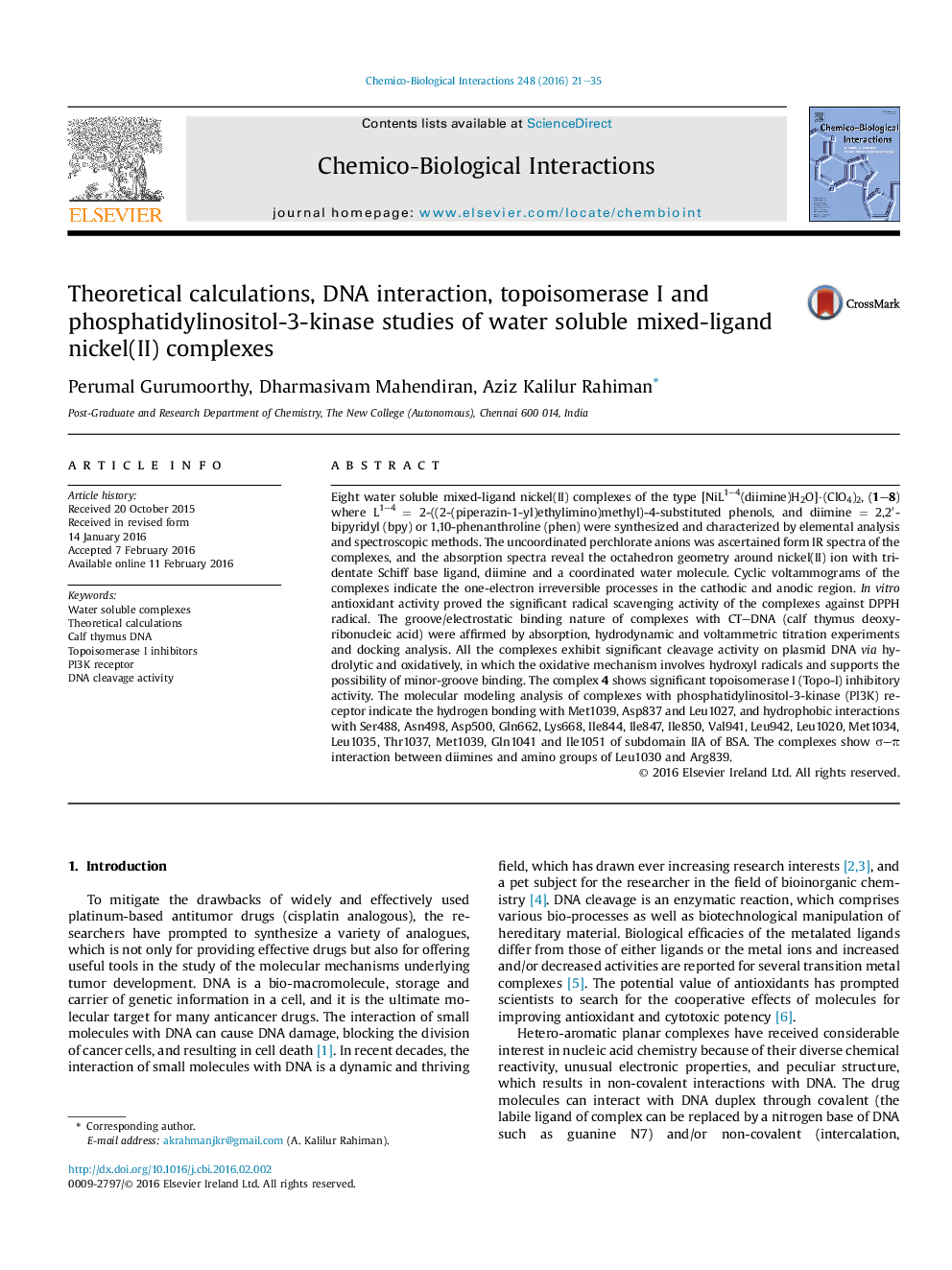| Article ID | Journal | Published Year | Pages | File Type |
|---|---|---|---|---|
| 2580029 | Chemico-Biological Interactions | 2016 | 15 Pages |
•The water soluble complexes possess notable scavenging potency against DPPH radical.•Complexes exhibit groove/electrostatic binding to DNA, and cleave DNA efficiently.•Topoisomerase I inhibition activity have been studied.•Complexes show hydrogen bonding, hydrophobic and σ–π interactions with PI3K.•Complexes containing methyl/extended aromatic ring show significant bio-activity.
Eight water soluble mixed-ligand nickel(II) complexes of the type [NiL1–4(diimine)H2O]·(ClO4)2, (1–8) where L1−4 = 2-((2-(piperazin-1-yl)ethylimino)methyl)-4-substituted phenols, and diimine = 2,2′-bipyridyl (bpy) or 1,10-phenanthroline (phen) were synthesized and characterized by elemental analysis and spectroscopic methods. The uncoordinated perchlorate anions was ascertained form IR spectra of the complexes, and the absorption spectra reveal the octahedron geometry around nickel(II) ion with tridentate Schiff base ligand, diimine and a coordinated water molecule. Cyclic voltammograms of the complexes indicate the one-electron irreversible processes in the cathodic and anodic region. In vitro antioxidant activity proved the significant radical scavenging activity of the complexes against DPPH radical. The groove/electrostatic binding nature of complexes with CT–DNA (calf thymus deoxyribonucleic acid) were affirmed by absorption, hydrodynamic and voltammetric titration experiments and docking analysis. All the complexes exhibit significant cleavage activity on plasmid DNA via hydrolytic and oxidatively, in which the oxidative mechanism involves hydroxyl radicals and supports the possibility of minor-groove binding. The complex 4 shows significant topoisomerase I (Topo-I) inhibitory activity. The molecular modeling analysis of complexes with phosphatidylinositol-3-kinase (PI3K) receptor indicate the hydrogen bonding with Met1039, Asp837 and Leu1027, and hydrophobic interactions with Ser488, Asn498, Asp500, Gln662, Lys668, Ile844, Ile847, Ile850, Val941, Leu942, Leu1020, Met1034, Leu1035, Thr1037, Met1039, Gln1041 and Ile1051 of subdomain IIA of BSA. The complexes show σ–π interaction between diimines and amino groups of Leu1030 and Arg839.
Graphical abstractFigure optionsDownload full-size imageDownload as PowerPoint slide
